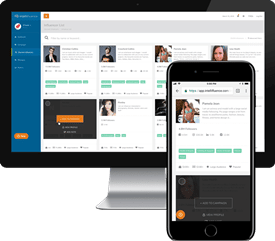Last Updated on June 8, 2020
In order to answer this question, you’re going to need to understand what it is you’re trying to accomplish. This is article 9 of a 14 part series on everything influencer marketing, so before digging in on whether local or national influencer audiences matter more for you and your campaign, do the following:
- Set goals for your campaign.
- Understand who you are trying to influence.
- Pick the appropriate social channels.
- Select the type of influencer that ties into overall campaign goals.
Now that you’re caught up, here’s my answer to this complex question: it depends. Since there are multiple variables that go into determining the types of audiences that are ideal for your campaign, let’s kick off what we do second best on the Intellifluence blog. Let’s build a usefulness matrix!
GEO Audience Usefulness Matrix
For this matrix we’ll be looking into whether certain attributes are served better by local audiences or by national audiences and trying to answer yes (Y) or no (N) questions as a way of making that determination (except for geoactivity). Bear with me as this is probably going to be new terminology:
- Geocentricity — are the buyer personas chosen for the campaign confined primarily to a specific geographic? Example: buyer persona is a mom in Phoenix and only buys local. National exposure may be overkill if the buyer is always local.
- Geobias — Would tying to a specific local audience inherently alienate other geographies? Example: selling Boston Red Sox hats — 100% good idea for Boston market, not so good in New York City.
- Geospecificity — Is your business confined to a single or small set of locations? Example: a chain of grocery stores within a 50 mile radius. While this may seem like an obvious consideration, you’d be surprised how often national advertising is purchased for small businesses who cannot serve outside of a relatively fixed geographic boundary. Geospecificity is essentially the mirror of egocentricity; one is buyer focused and one is seller focused.
- Geoactivity — Is the campaign goal skewed more towards awareness or engagement? National campaigns support national awareness and local campaigns support local awareness, however research from Howard Lerman of Yext shows that local tagging in Instagram influencer campaigns led to 70% higher engagement. Hat tip to Andrew Shotland for pointing me to this; in my opinion it reinforces the importance of peer influence on local levels and is going to be something we push to improve on for influencer discovery. [Howard, comment with a link to your slides and I’ll update to properly credit you].
Now that we understand the types of questions we need to ask, let’s see how the local vs national audience question plays out over a few different case studies.
Case Study 1: Starwars.com
For Jeff Preston of Disney, parent company of Starwars.com.
Product: Disney Infinity 3.0 Edition.
Buyer persona: 24 year old female living in Los Angeles named Karen is a huge Rey fan. She is an Android phone user and with any downtime can be found posting on gaming forums with her support of the Rebel Alliance.

In this particular case, a local campaign wouldn’t be necessary. Karen is willing to purchase / view content from any local so long as it is Star Wars related and isn’t going to be bothered by Phoenix Star Wars events showing in an influencer campaign as they are not competing geographies. If anything, if the content provided is on localized events, she’ll likely judge whether it is worth the trip to attend. As Starwars.com is not tied to a fixed location, it needn’t worry about local campaigns if the purpose of the campaign is to generate awareness with the understanding that awareness will lead to the desired engagement action anyhow.
Case Study 2: Miami Fishing Charters
For Todd Malicoat, owner of Miami Fishing Charters.
Product: Miami area fishing charter
Buyer persona: 38 year old male living in Phoenix named Joe that has never been big game fishing, but wants to learn. He knows he needs to travel to a place where big fish exist since Arizona is landlocked until California inevitably falls into the ocean, and happens to have a few days of dead time in the Miami area.

For Joe, he’s going to be in Miami (or is already there); he wants to make a decision on big game fishing for his specified days, but doesn’t care so much if he sees content for another area (though it wouldn’t be as useful to him). Since Miami Fishing Charters appears to be focused on the Miami area with the location of the Marauder, and the goal is to get charters booked, a local campaign is going to make obvious sense. For the engagement boost, those campaigns are going to be appropriately tagged by satisfied customers.
Case Study 3: BloomNation
For Eric Wu ( ・ㅂ・)و ̑̑, VP of Product for BloomNation.
Product: flower delivery
Buyer persona: 45 year old male living in New York City named Steve that forgot his anniversary and is buying emergency flowers, stat! The flowers need to be perfect; he can’t afford any more mistakes with chain flower bouquets that never end up looking right.

This is actually a trick case study. While BloomNation obviously has national appeal and national coverage, each geographic area’s bouquets are unique. This means the product needs to be treated as though it is a single location area, for the buyer’s perspective. Steve needs flowers fast, so seeing only NYC relevant flowers is key, and something that looks local looks better than a chain, so the expected Instagram engagement with location tagging would be rather high.
To local or not to local, it totally depends…is the answer
As you can see, similar to picking the right social channels and influencer types, the decision to focus on influencers with local audiences can be pretty important for some campaigns. If you are selling to a geographically constrained audience, opting for local level influencers to make use of relevant local tagging might make all the difference for your campaign. For local, national, or even international campaigns, you can find the right peer influencers for you, today, by signing up for a free trial at Intellifluence.

Joe, CEO and Co-Founder of Intellifluence, has over 25 years of experience in SEO, leading several successful marketing companies and providing expert consultation. He is the author of The Ultimate Guide to Using Influencer Marketing, which is available as an eBook or in print.






